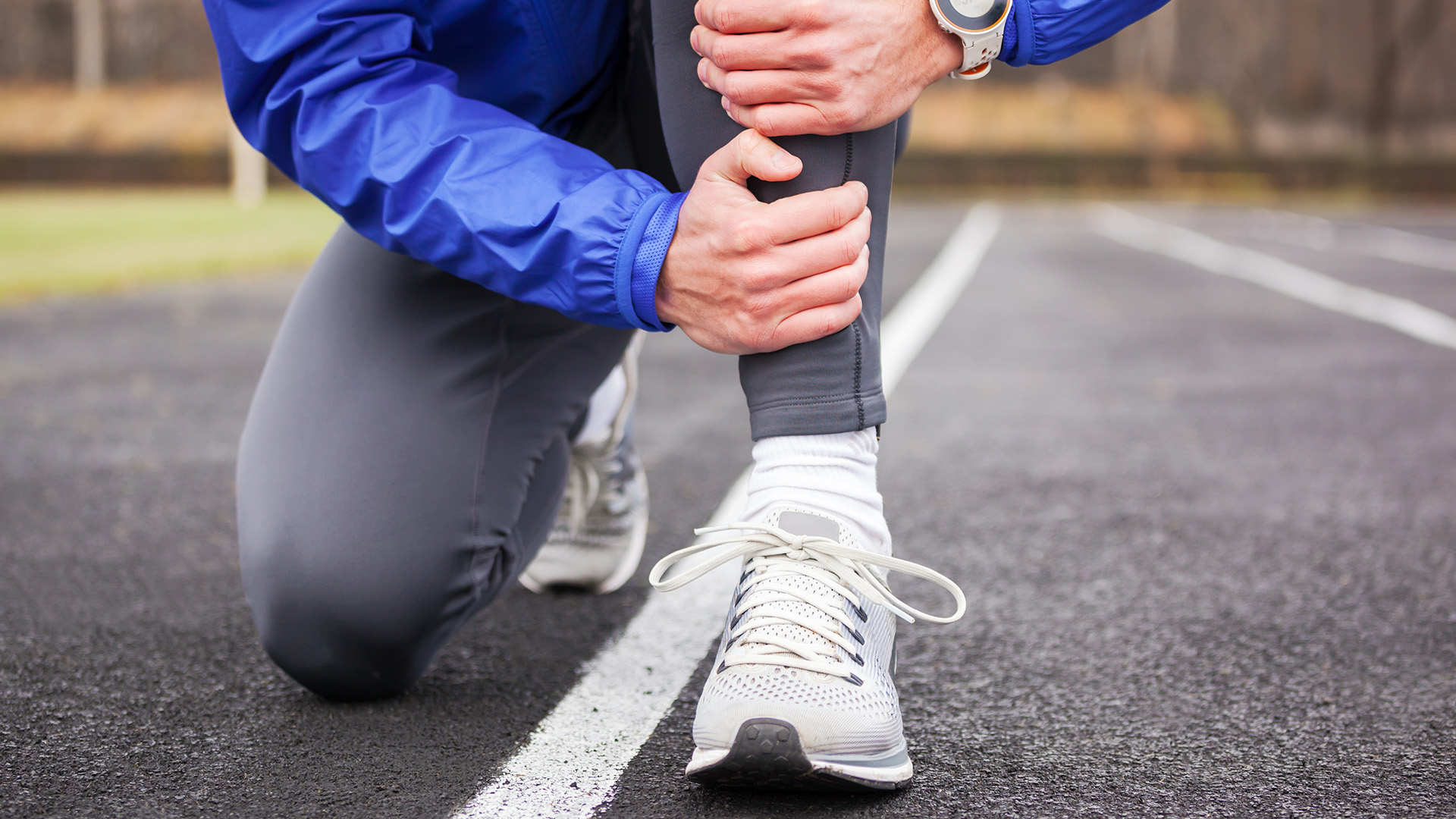treat and prevent Shin Splints, running is one of the easiest methods of getting a workout. It’s as easy as putting on your sneakers, walking out of the house and getting moving.
There’s more to a good running routine than just running down the street, particularly when you suffer an injury from overuse, such as shin and ankle splints.
If you’ve experienced this ache before, you know the frustrating experience it can be. The running routine turns into a painful trudge, and eventually, the pain in your lower limbs can be too much without treatment.

This could be devastating to your goals for fitness, particularly when you’re only beginning with regular training or increasing your mileage and intensity to prepare for races.
It is essential to know exactly what’s happening to your lower leg muscles if you notice discomfort and pain while you run.
What are Shin Splints?
Initially, there’s an essential distinction regarding understanding the meaning behind shin splints and the injuries P.T.s treat. “Technically, Shin splints could be an indication of an injury to your tibia bone on your lower leg.”
claims Bespoke Treatments physical therapy Daniel Giordano, D.P.T., C.S.C.S. “If you’re experiencing severe pain on your lower leg strongly recommend you speak with an expert physician and have that examined.”
However, that’s different when talking about shin Splints. “The doctor’s most common perception of shin splints can be tension in the lower leg’s tibialis anterior muscles or in the calf muscles that may create tension from the rear to the front of the lower leg.” continues.
The pain could be caused by tiny tears that develop on the border between the Tibia and the lower leg muscles, which connect to the bone.
“Shin splints (also called the Medial Tibial Syndrome) is an injury which is usually the result of a ‘too much, too fast’ method of training (in other words, overtraining),” says Dr Rachel Tavel, PT, D.P.T., C.S.C.S., a physical therapist at Shift Wellness in N.Y.C.
“It could be a dull ache on the leg’s lower part on the lower portion of the lower leg or the feeling of a hammer striking the bone whenever you run or walk.” Travel continues. “There is often a feeling of tightness or tension in the area too.”
How to Avoid Shin Splints
This could indicate muscle weakness if you often experience shin splints or shin splints.
“While Shin splints can be an everyday knee injury in the lower leg, it’s essential that runners work to improve the strength of their core and hips simultaneously,” says Dr Anh Bui, PT, D.P.T., C.S.C.S., an exercise physiotherapist in E.X.O.S. situated in Larkspur, California. “
The glutes, particularly, are the biggest, strong muscles in the human body. They affect the control of ankle and knee joints, reducing the stress on smaller muscles in the leg’s lower part.”
While stretching and strengthening is essential, improving running mechanics is just as crucial. “Overstriding is the top risk factor in running associated with shin or splints.” Dr Bui. “
Landing with your feet firmly away from your body will increase the force of impact going straight to your Tibia (shin bone) instead of being taken up by larger joints like the hip. Splints for the shins of runners should examine the pace (step speed in minutes) and increase it by 5-10 per cent if their cadence is not more than 180.”
But, the most important thing to do in avoiding shin splints is to treat the issue at the first sign that you begin feeling it.
“Once the pain begins, the patient should take a break, take a break applying ice, and then massage the area,” advises Doctor Dr Mikhail. “Consider changing your activity since jumping or running can cause to result in shin splints discomfort.”
It would help if you also thought about your choice of shoes. “Proper footwear is crucial as sometimes a lack of arch support could be the reason for the shin splints,” says Doctor Dr Mikhail.
If the shin splints you have put on aren’t getting rid of, or you’re experiencing extreme pain, you may require a visit to a physician.
“You must be referred to an M.D. to make sure that the source of the pain is the shin splints rather than something more serious like an anterior compartment disorder,” says Doctor. Mikhail.
Who Benefits From Shin Splints? Are Stretches Beneficial?
If you’re a runner, claims Giordano, shin splints could be standard, particularly when you’re a novice or a runner who increases the volume or intensity of your run too quickly.
Even experienced athletes may have trouble with shin splints as well. “If you are a pro runner or expert athlete, this may occur in your case,” says the Doctor. “For instance, if you are training for marathons or in the race season, the volume up to a certain amount will cause a lot of strain on your muscles in your leg.”
That’s right, athletes who add more intensity into their daily routines, regardless of whether they’re beginning their journey or are experienced racers, could be afflicted with shin or splints. You could benefit from stretching if you’re in one of these groups.
4-Shin Splints Stretch to ease tension
Then, four stretches reduce the tension in your lower legs and relieve the shin and splints.
Foam Rolling the Shins
The first workout is rolling the shins. So you’ll need a foam roller to make this move. When you’re doing this exercise, be sure to cover all the muscles from the knees to the ankle joint.
What do I Do it:
- Place your feet with face facing down, and place your front lower leg over the foam roller.
- When the lower leg sits on the roller, gently move the foot forward. This will “really achieve to the anterior or tibialis posterior muscles which run along the front portion of the shin”, Giordano says. Giordano.
- Then, gently roll your leg and down using the roller. Giordano states that what we’re trying to accomplish here is to increase the flexibility for the soft tissues or soften the muscle in the lower leg. “If you’re experiencing too much pain, what could we do? Ease the body weight or compression to the roll, and take a step back and bring the knee back to the ground just a slightly,” says Giordano. “So it’s going to reduce the force the roller is pushing, and then you can move back and back.”
- As a pre-warm-up or post-activity exercise, you can do 45 minutes of foam rolling to increase the softness of your tissue and improve blood flow to the region. This could help ease the strain on your shins.
3-Dial Ankle Mobility
You are moving on to the next exercise for the shin splints. It’s a multidirectional exercise that concentrates on increasing your ankle’s movement.
What Do I Do it:
- Make yourself half kneeling and then put both hands on the knees of your upright.
- Start by moving your knee towards the big toe for the first step. Reverse it and then move your knee up over the toe in between. Then, move it back and push the knee forward on the toes on the sides of your feet. “What we’re trying to accomplish is to increase the ankle’s flexibility. This will relieve stress off the shins.
- Perform 10 or 15 repetitions in all directions before or after working out to improve your ankle’s flexibility, which will help reduce tension in your lower leg.
Tibialis anterior stretch
Another stretch you can do is a posterior tibialis stretch or stretching that is located in the anterior region of the shins.
The Way Do I Do This:
- Get down on your knees as you bring your feet together behind you. Keep your knees spread. Move your butt back toward your heels.
- Once you’ve gotten into this position, raise one knee to create a stretch up to the top of your shin. Return to the starting position, switching sides.
- For warm-up to warm up, hold them for around three seconds before performing 10-15 repetitions. Perform three sets of approximately 30-second hold for a cooling or post-activity workout. This will “decrease tension in your muscle, improve your flexibility, and lessen your soreness before your next exercise,” says Giordano.
Runner Stretch
Not to mention that there is this runner’s favourite stretch.
What do I Do This:
- Standing up, you can get into the lunge position while bending your front knee while putting your back heel to the ground.
- Move your weight forward, creating a stretch on the side of your leg that is behind or even into the calf muscles. As Giordano emphasizes, it’s vitally crucial to stretch out the posterior portion of our lower limbs because, often, the tension in our lower limbs can cause anxiety in our front.
- If you’re using this as a warm-up stretch, hold it for 3 seconds, then come back up and repeat. After a workout or running, perform three sets of 30-second keeps starting at the bottom. Return to the top.
To protect yourself, It’s important to remember that if you’re feeling severe or severe pain, seek a doctor. “But If it’s just tension in your muscles, do these exercises before or following exercise to increase the performance of your muscles or reduce soreness before your next exercise,” says Giordano.
read more The Difference Between A Reformer Pilates And A Tower?





